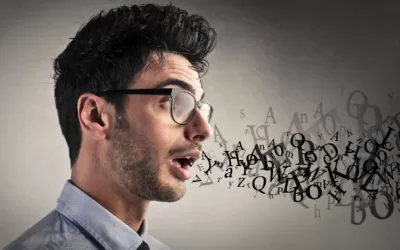Speaking: The Foundations of Conversational English: Getting Started
Ah, Conversational English, the lingo of the everyday, the sassy remarks of a teenager, the awkward chit-chat at your cousin’s wedding, or the latest tea you spill with friends at brunch. I, your resident English teacher-cum-storyteller, am here to guide you through its delightful maze. Buckle up; it’s going to be quite the linguistic ride.
Let’s imagine, for a moment, that you’re in an English-speaking country for the first time. The air is filled with sounds you recognize but can’t quite grasp. Like hearing the theme song of a TV show you watched as a kid but can’t quite hum along to. That’s where our adventure in conversational English begins.
The Importance of Casual Chit-Chat
Why focus on conversation rather than, say, reading Shakespeare or decoding The New York Times? Well, unless you’re planning on time-traveling to the Elizabethan era or debating international policies over breakfast, conversational English is what you’ll be using the most. It’s the key to making connections, sharing stories, and (let’s be honest) ordering that delicious-looking cheesecake at the café.
Take Jane, for example. She’s an exchange student from France, fluent in textbook English. She can recite Keats and discuss the economic theories in class, but she’s a fish out of water when ordering at a coffee shop. “I’d like a hot black bitter drink, please.” she once said. The barista, puzzled, handed her a plain black coffee, and that’s how Jane learned the magic of the word “black coffee.”
The Art of Listening
Good conversation isn’t just about speaking. In fact, most of it is about listening. Think about it. If everyone spoke and no one listened, we’d just be a cacophony of voices, like a classroom when the teacher steps out.
My friend Tom, a native English speaker, learned this the hard way. While traveling in Japan, he assumed nodding and smiling was enough. One day, he agreed to what he thought was a karaoke night out. It turned out he had agreed to sing solo at a local radio station. All because he hadn’t been paying enough attention!
Building Your Vocabulary
In conversational English, context is everything. Phrases like “What’s up?” aren’t inquiries about the sky. And when someone says, “I’m feeling blue,” they’re probably not turning into a Smurf.
Then there’s Sarah. In her early days of learning English, she thought “break a leg” was a curse rather than a way to wish someone luck. Imagine her horror when her roommate said it before her dance performance!
Grammar: The Friendly Ghost
Many learners fear grammar. But in conversational English, it’s like a friendly ghost. It’s there, but it’s not always visible or intimidating. You can start a conversation with “You seen this?” instead of “Have you seen this?” and still be understood. It might not pass in an academic essay, but on the streets? You’re golden.
Recall my neighbor, Bob. An English professor, he once argued with a 7-year-old over the grammatical accuracy of “Ain’t no sunshine when she’s gone.” He lost. Because while it may not be grammatically correct, it’s conversationally perfect.
Mistakes: The Spice of Life
Don’t fear mistakes; they’re the hilarious tales you’ll share later. Like when I tried to impress a Spanish-speaking friend by saying I was “embarazada” (pregnant) instead of “avergonzada” (embarrassed). Mistakes in conversational English aren’t just forgivable; they’re memorable and often endearing.
Wrapping Up Our Chatty Journey
Conversational English, in its essence, is a dance. A tango between speaking and listening, a waltz with words. It’s filled with quirky phrases, amusing mistakes, and unforgettable stories.
As you embark on this journey, remember that it’s less about perfection and more about connection. Every conversation is an opportunity to learn, laugh, and live the language. So, the next time you stumble upon a new phrase or make a hilarious blunder, embrace it. After all, that’s what makes conversational English so beautifully imperfect and incredibly human.
Now, dear reader, go forth and converse. And maybe, just maybe, remember to say “black coffee” instead of “hot black bitter drink”.
Practice What You Learned
Exercise 1: Fill in the Blanks with Appropriate Vocabulary
Given the context, choose the right phrase or word to fill in the blanks from the options provided:
- When Jack was feeling sad, he told his friend, “I’m feeling ______.”
a) blue
b) yellow
c) red - At the theater audition, Jill wanted to wish her friend luck, so she exclaimed, “______!”
a) Break an arm
b) Break a foot
c) Break a leg - After watching the basketball match, Mike asked his friend, “______ that game last night?”
a) Seen you
b) You seen
c) You seeing
Reveal Answer Key
- a) blue
- c) Break a leg
- b) You seen
Exercise 2: Correct the Mistake
Read the sentences below and identify any conversational English mistakes. Correct them:
- I’m going to the shop for buy some bread.
- She’s good at the singing songs.
- Can I have a cup of hot brown liquid?
Reveal Answer Key
- I’m going to the shop to buy some bread.
- She’s good at singing songs.
- Can I have a cup of coffee?
Exercise 3: Role Play
Partner up with a classmate. One of you is a traveler and the other is a local barista. Using conversational English, act out a scenario where the traveler is trying to order a drink but makes a humorous mistake in their order. Then, switch roles.
Steps for Further Exploration and Practice:
- Engage in Conversations: Nothing beats real-life practice. Engage in daily small talk with friends, family, or strangers. Whether it’s about the weather, recent news, or a TV show, just chat!
- Keep a Conversational Journal: Note down new phrases or words you come across every day. Try using them in sentences to understand their context better.
- Watch Sitcoms and Talk Shows: Shows like “Friends” or “The Ellen Show” can give you insights into conversational English. Pay attention to intonations, slang, and even mistakes!
- Join English Speaking Clubs: Many schools and communities offer clubs or groups where people gather just to speak in English. It’s a supportive environment where making mistakes is part of the learning.
- Use Technology: Apps like Duolingo, Babbel, or HelloTalk connect you with native speakers or fellow learners. They provide exercises, quizzes, and chat options to help improve conversational skills.
- Visit English Speaking Areas: If possible, spend some time in English-speaking countries or areas. Immersion is a fantastic way to practice and understand conversational nuances.
- Mimic and Repeat: Listen to conversations, either in real life or from TV shows, and try to mimic the sentences or phrases. This helps with pronunciation and understanding of casual tones used in conversations.
Remember, the journey of mastering conversational English is filled with stories, laughter, and loads of unforgettable experiences. Cherish them all!










0 Comments